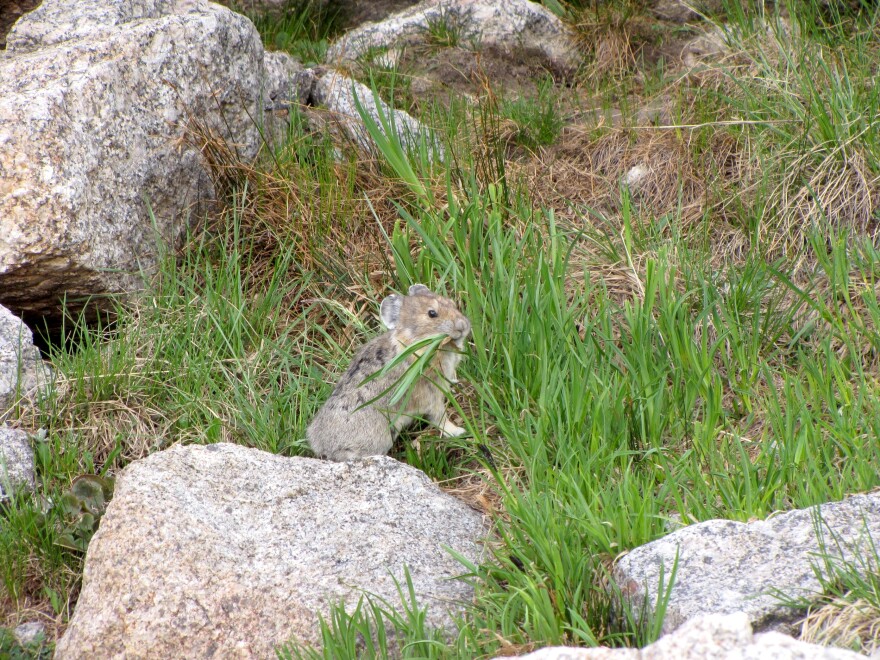Pikas are built for cold, thin air. They live on cool, rocky slopes across the Mountain West, where they scurry between boulders, stash grasses for winter, and avoid the midday heat. And they’re unmistakable once you spot one.
“They’re about the size and color of a baked potato,” said Chris Ray, a researcher at the University of Colorado Boulder. “But they have Mickey Mouse ears.”
Ray has studied pikas for decades, including at Niwot Ridge, a long-running alpine research site west of Boulder. Her team’s latest findings show that far fewer young pikas are surviving long enough to become adults — a trend she calls concerning but not surprising.
Pikas can overheat easily, and warmer conditions are making travel across their habitat more challenging.
“It was the difficulty pikas have moving across warmer, south-facing slopes and lower elevations,” Ray said. “And that’s just going to increase with climate change.”
Along with hotter summers, pikas are also facing lighter and less consistent snowpack, which historically insulates them during winter. On top of that, shifts in alpine vegetation may be affecting their food supply.
Ray says scientists consider pikas an indicator species — one that can signal broader environmental changes in fragile mountain ecosystems. Tracking their numbers, she added, could help researchers better understand how warming is transforming high-elevation landscapes across the West.
This story was produced by the Mountain West News Bureau, a collaboration between KUNR, Wyoming Public Media, Nevada Public Radio, Boise State Public Radio in Idaho, KUNC in Northern Colorado, KANW in New Mexico, Colorado Public Radio, KJZZ in Arizona and NPR, with additional support from affiliate newsrooms across the region. Funding for the Mountain West News Bureau is provided in part by the Corporation for Public Broadcasting and Eric and Wendy Schmidt.




